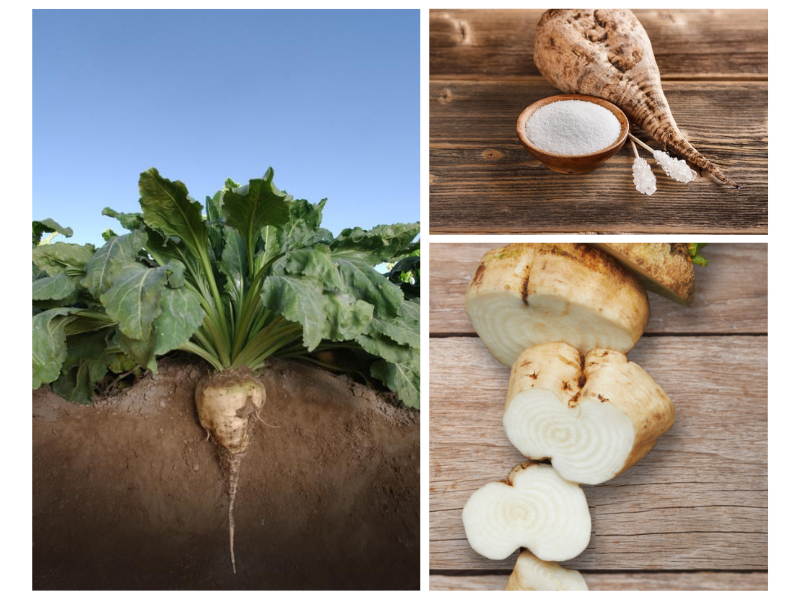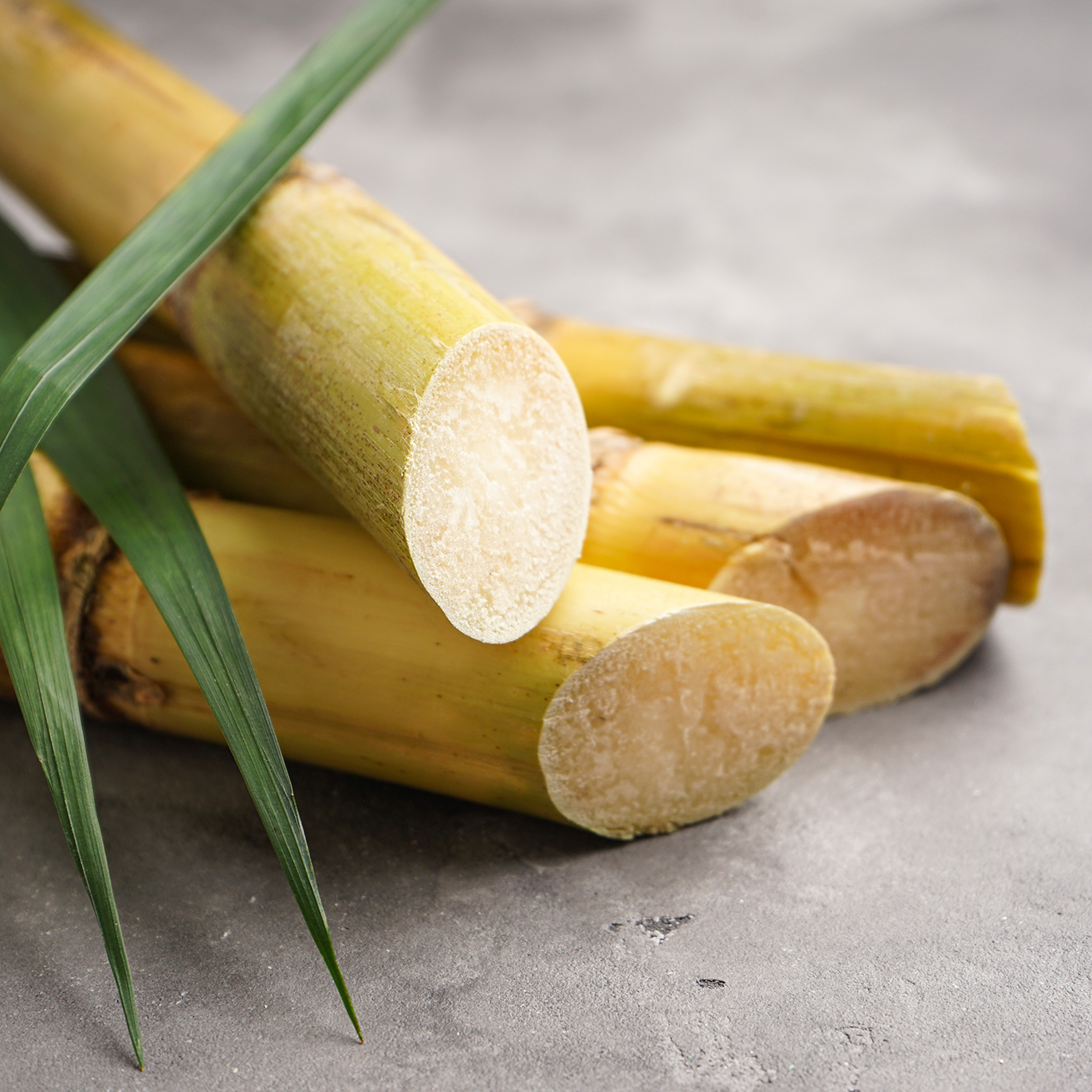Ways to determine between Sugar beet vs sugar cane for your culinary needs
Revealing the Reality Behind Sugar Beet Vs Sugar Cane: Benefits, Makes Use Of, and Processing Techniques Described
The distinction between sugar beet and sugar cane is often ignored in conversations about sugar manufacturing. Each crop offers one-of-a-kind advantages and applications in various markets. Their cultivation techniques and processing strategies also vary significantly. Comprehending these subtleties is vital for stakeholders in the sugar industry. What ramifications do these distinctions have for wellness, taste, and ecological impact? Checking out these elements can disclose much deeper insights into the worldwide sugar market.

Summary of Sugar Beet and Sugar Cane
Sugar beet and sugar cane are two main resources of sugar, each with distinctive characteristics and farming methods. Sugar beet, an origin veggie, grows in temperate climates and is generally collected in the loss. Its high sugar web content, ranging from 15% to 20%, makes it a beneficial crop for sugar production. The procedure includes removing juice from the beetroots, which is then fine-tuned right into granulated sugar.
In contrast, sugar cane is an exotic grass that grows in warm, moist settings. It can accomplish a sugar web content of approximately 14%, yet its high, fibrous stalks call for extensive processing. The cane is squashed to remove juice, which undertakes boiling and condensation to create sugar. Both sources contribute greatly to the global sugar supply, with sugar beet primarily grown in Europe and North America, while sugar cane is chiefly grown in Brazil, India, and various other exotic regions.
Growing Practices: Sugar Beet vs. Sugar Cane
Farming techniques for sugar beet and sugar cane differ significantly because of their unique growing conditions. Sugar beets thrive in cooler environments with well-drained soil, while sugar cane prefers warmer temperatures and plentiful moisture. Additionally, the harvesting strategies utilized for each plant mirror these ecological requirements and influence total yield and quality.
Expanding Conditions Comparison
While both sugar beet and sugar cane grow in particular environmental problems, their growing practices vary markedly. Sugar beet is largely expanded in temperate areas, favoring cooler environments with well-drained soil and modest rainfall. It calls for a growing season of regarding 90 to 120 days, with suitable temperature levels in between 15 ° C to 25 ° C. In contrast, sugar cane flourishes in exotic and subtropical environments, thriving in cozy temperatures varying from 20 ° C to 32 ° C. It needs abundant sunlight and regular rains, frequently requiring irrigation in drier locations. Sugar cane has a longer growing cycle, usually lasting 12 to 24 months. These differences in growing problems significantly affect the geographical distribution and agricultural practices related to each crop.
Gathering Strategies Differences
The harvesting methods for sugar beet and sugar cane reflect their distinctive development characteristics and agricultural techniques. Sugar beet is typically harvested mechanically, with harvesters created to root out the whole plant, guaranteeing marginal soil disturbance. The beetroots are after that carried for handling quickly after harvest to maintain high quality. On the other hand, sugar cane harvesting typically entails a mix of manual and mechanical approaches. Workers may at first cut the cane by hand, specifically in areas where mechanization is less feasible. Consequently, specialized machinery is used to collect and transport the cut stalks to processing facilities. These differing techniques not just impact performance but likewise influence the high quality and return of the last sugar items, showcasing the flexibility of each plant to its setting.
Nutritional Comparison and Health Advantages
When comparing the nutritional profiles of sugar beet and sugar cane, it ends up being clear that each deals distinctive wellness advantages. Sugar beetroots are abundant in essential nutrients like folate, manganese, and potassium, which add to general health. They additionally consist of fiber, which aids food digestion and might assist regulate blood glucose levels. Additionally, sugar beetroots are recognized for their antioxidant homes, which can deal with oxidative stress and anxiety.
Alternatively, sugar cane is largely made up of sucrose, offering fast power. While it lacks the same degree of minerals and vitamins discovered in sugar beets, sugar cane does contain small quantities of B minerals and vitamins such as calcium and magnesium. Sugar cane juice is usually promoted for its hydrating homes and possible health and wellness advantages, consisting of improved digestion health and wellness. Eventually, the option between sugar beet and sugar cane might depend upon specific wellness goals and nutritional preferences.
Taste Profiles and Culinary Utilizes
Taste accounts of sugar beet and sugar cane vary substantially, influencing their culinary applications (Sugar beet vs sugar cane). Sugar cane, with its normally pleasant and intricate flavor, is commonly preferred in beverages, desserts, and different culinary recipes. It provides a rich, caramel-like note that improves the preference of things such as syrups, molasses, and rum. On the other hand, sugar beet has an extra neutral and much less aromatic taste, making it suitable for applications where sweet taste is desired without changing the recipe's inherent flavors. It is frequently used in refined foods, baked products, and sugar
Cooking experts often select sugar cane for its deepness and splendor, particularly in gourmet food preparation and craft drinks. On the other hand, sugar beet's versatility as a sweetener in mass-produced products satisfies a more comprehensive market. Inevitably, the selection in between these 2 sugars can substantially influence taste accounts and overall culinary experiences.
Environmental Impact of Sugar Manufacturing
Sugar manufacturing, whether from sugar beet or sugar cane, lugs considerable environmental implications. Sugar cane cultivation typically results in logging, specifically in exotic regions, disrupting local environments and adding to biodiversity loss. The comprehensive use fertilizers and pesticides in both sugar beet and sugar cane farming can cause dirt destruction and water pollution, impacting surrounding environments and neighborhoods. Furthermore, the high water intake needed for sugar cane irrigation postures a danger to neighborhood water materials, particularly in deserts.
Alternatively, anonymous sugar beet farming generally takes place in warm climates, which may minimize some deforestation issues. It is not without its very own obstacles, consisting of soil disintegration and dependence on chemical inputs. Overall, the ecological impact of sugar production is multifaceted, requiring sustainable farming methods and awareness of source administration to minimize damage to environments and promote environmental health.
Processing Techniques: From Plant to Sugar
Many handling techniques are employed to change sugar beet and sugar cane into granulated sugar, each approach reflecting the one-of-a-kind qualities of the resource plant. For sugar beetroots, the process begins with cleaning and cutting the roots into slim strips, which are then based on diffusion-- a strategy where warm water extracts sugar from the beet pieces. The resulting fluid is purified, focused, and taken shape.
In comparison, sugar cane handling entails crushing the stalks to remove juice, followed by information to get rid of contaminations. The juice is after that evaporated, causing syrup that undergoes condensation. Both processes are complied with by splitting up of the sugar crystals from the molasses, which is a by-product. The final stages include drying and packaging the granulated sugar for circulation. These techniques highlight the distinctive pathways whereby these 2 plants generate sugar, each with its own set of challenges and effectiveness.
Economic Elements of Sugar Beet and Sugar Cane Industries
The financial landscape of the sugar beet and sugar cane markets discloses significant distinctions in manufacturing expenses, market characteristics, and local influences. Sugar beet, mostly expanded in pleasant environments, frequently sustains greater manufacturing costs as a result of labor and input expenditures. Conversely, sugar cane prospers in tropical regions, typically gaining from lower labor expenses and favorable climatic conditions, which can result in higher yields.
Market dynamics also vary, as sugar cane controls worldwide production, representing roughly 80% of sugar output. This prevalence influences pricing read structures and profession circulations. In contrast, sugar beet is much more regionally concentrated, particularly in Europe and North America, affecting neighborhood economies based on beet manufacturing.
Moreover, variations in worldwide sugar costs can significantly impact both industries, influencing farmer revenue and investment levels. Comprehending these economic facets is necessary for stakeholders aiming to browse the intricacies of the sugar market efficiently.

Frequently Asked Questions

Can Sugar Beet and Sugar Cane Be Intercropped Efficiently?
Intercropping sugar beet and sugar cane presents obstacles due to varying growth requirements and environmental requirements. However, with cautious management and appropriate conditions, it might generate benefits such as enhanced dirt wellness and resource performance.
What Are the Historical Beginnings of Sugar Beet and Sugar Cane?
The historic beginnings of sugar beet trace back to 18th century Europe, while sugar cane has origins in Southeast Asia, cultivated for thousands of years. Both plants have actually significantly influenced global sugar production and farming.
Just How Do Sugar Beet and Sugar Cane Affect Dirt Health And Wellness?
The effects of sugar beet and sugar cane on dirt wellness Recommended Reading vary. Sugar beet can improve dirt structure and nutrient web content, while sugar cane may deplete nutrients otherwise managed properly, impacting long-lasting dirt fertility.
Exist Any Type Of Arising Technologies in Sugar Production?
Emerging innovations in sugar manufacturing consist of precision agriculture, progressed genetic modification for higher yields, and innovative removal approaches. These developments aim to improve effectiveness, lower environmental impact, and improve the overall sustainability of sugar production processes.
What Are the Secret Distinctions in Labor Needs for Both Plants?
The vital distinctions in labor needs for sugar beet and sugar cane hinge on planting, harvesting, and handling. Sugar beet vs sugar cane. Sugar beet generally requires even more automation, while sugar cane usually requires more manual labor for harvesting and processing stages